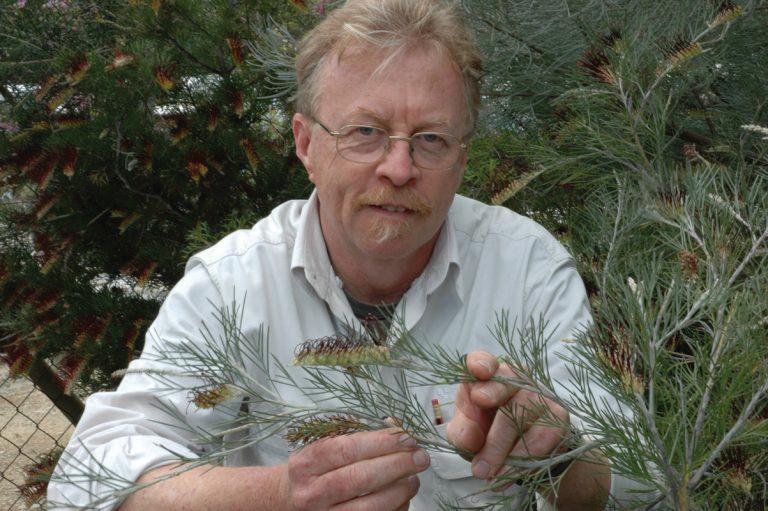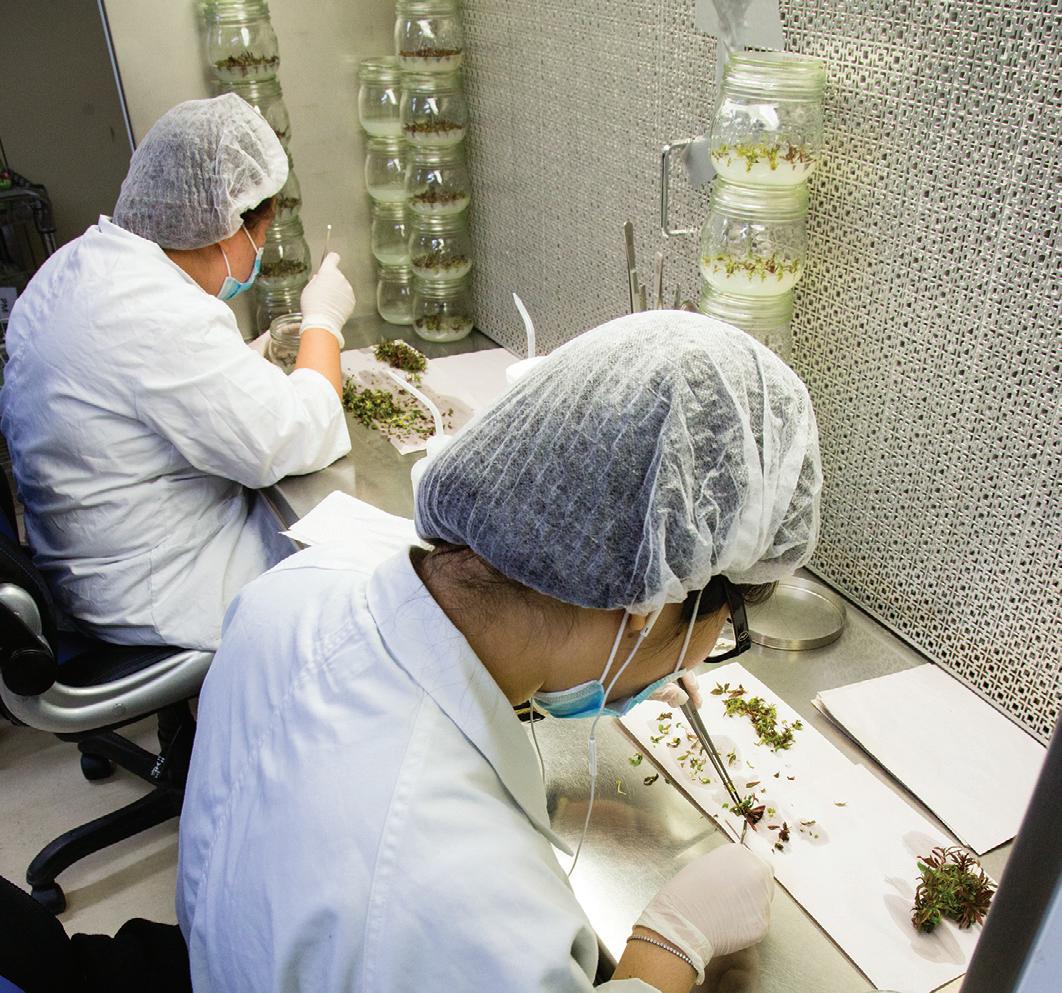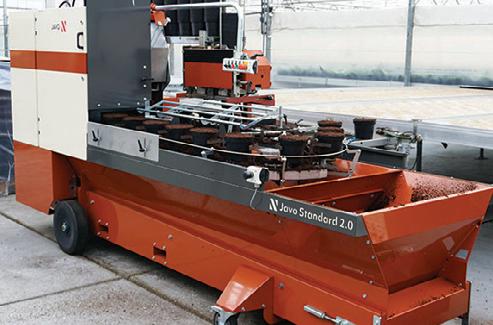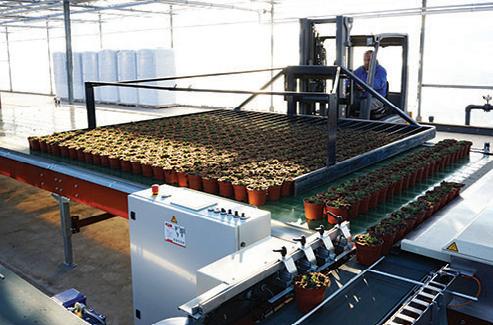
5 minute read
T&SG: THE SECRET WORLD OF PLANT BREEDING

Tree & Shrub Growers: The secret world of plant breeding By Matt Ross
On 28th July the Tree & Shrub Growers held an online meeting to discuss Plant Breeding. Attendees had the opportunity to hear from three experts working in the field of plant breeding in Australia. They took us on the journey of breeding plants from start to finish.
The session was expertly hosted by Heath McKenzie of Australian Growing Solutions; putting questions to Digby Growns (D), Senior Plant Breeder at Kings Park and Botanic Garden in Western Australia, Mark Lunghusen (M), Managing Director of OutBack Plants and Adrian Parsons (A), Managing Director of Helix Australia. The session was well attended with over thirty industry figures tuning in to listen, learn and interact with the experts.
Digby has been the Senior Plant Breeder at Kings Park for 15 years. They run 8 breeding programs, mostly ornamental, focusing on native flora. The aim of the Program is to promote local flora t cultivate a sense of place, whilst reducing use of water, fertiliser and creating habitats for native fauna.
How do you decide which plants to develop?
D – It’s about looking at what plants are successful in the market. You then take attributes from closely relating plants in a bit to add to their quality, increasing vase life, yield, etc. There’s also such a thing as accidental breeding; sometimes I’ll be out in the bush and see something special that we can work with, there’s so much variation out there. Also seed lots we’re working with can throw up something unexpected, something unique.
M – In normal circumstances I’d spend almost half the year overseas with clients (distributors, growers, retailers) trying to understand exactly what the market is after.
Digby Growns

A – You need to surround yourself with the right people to identify opportunities. Not all plant scientists understand the commercial side of plant breeding. The best results happen when you have commercial experts and scientists working together. The commercial side will instruct the scientists on what the market is craving, the scientist will then deliver that in a plant’s colour, flowering time, yield, vase life, etc. It can take up to ten years to successfully breed a pant for market.
Once you’ve identified the attributes you want, how do you then develop a plant?
D – You select the parents based on the desired attributes and hope for them to be displayed in the germinated seedling. But it’s not quite as simple as that. Our program has produced one million Kanagaroo Paw seeds since 2007, only one hybrid of which has been released to date. There’s a lot of investment to plant breeding, both financial and time, 99.9 per cent of hybrids produced are destroyed.
After pollination the seed is germinated, sometimes using tissue culture. They are then grown and assessed for desired attributes. They’re trialled for flowering, disease tolerance, colour, form and more. They are cloned and further assessed by the commercial sector. We treat the plant roughly, trying to kill it, those that survive have a chance of coming to market. Maybe one plant in every 100,000 will.
How do you protect a new plant from competitors?
A – Plant breeder’s rights (PBR) are used to protect new varieties of plants that are distinct, uniform and stable. Protection is expensive and you must do so in each market you plan to sell the plant. It can be complicated to navigate different rulings in different countries. If we’re releasing a plant internationally, we’d always protect the plant in the U.S first.
Once plants are protected, we contact agents and partners to notify them of their availability.
D – It’s important not to create a plant that’s too similar to what’s already on the market. The PBR database can be used to double check, but it’s important you’re an expert and to be able to identify that yourself. u
u A – Propagation infringements are not commonplace in
Australian, but globally it’s more problematic, not to mention expensive.
What can growers do better for plant breeders?
D –Plant breeders rely on industry partners to inform them what the market wants. If growers embraced plant breeding programs, they’d have access to better plants.
M – Growers must pay the royalties and that doesn’t always happen.
Which plants are currently in demand?
M – ropicals are the hottest thing on the market. Like other industries plant trends are cyclical. I’ve bred plants and been told no, ten years later the same pant has been picked up. or that reason, I throw nothing away.
We’d like to thank Digby, Mark and Adrian for giving up their time and sharing their insights on plant breeding. It was fantastic to bring together industry figures from across Australia to share and learn from one another. Proving that meaningful collaboration can continue despite the logistical challenges.
Low technology greenhouse The Tree and Shrub Growers of Victoria is the largest sectional interest group of the Nursery & Garden Industry Victoria (NGIV). The group consists of members of the NGIV involved with nursery plant production and allied trade and provides fantastic networking opportunities across all areas of industry.

Contact NGIV to find out more and learn how to become a member of the Tree and Shrub Growers of Victoria.















